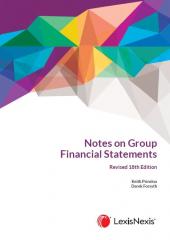Fundamentals of Financial Accounting 6th Edition
This is an introductory text for first year students aiming to become CAs.
One Year Subscription Only Terms
Subscribers receive the product(s) listed on the Order Form and any Updates made available during the annual subscription period. Shipping and handling fees are not included in the annual price.
Subscribers are advised of the number of Updates that were made to the particular publication the prior year. The number of Updates may vary due to developments in the law and other publishing issues, but subscribers may use this as a rough estimate of future shipments. Subscribers may call Customer Support at 800-833-9844 for additional information.
Subscribers may cancel this subscription by: calling Customer Support at 800-833-9844; emailing customer.support@lexisnexis.com; or returning the invoice marked 'CANCEL'.
If subscribers cancel within 30 days after the product is ordered or received and return the product at their expense, then they will receive a full credit of the price for the annual subscription.
If subscribers cancel between 31 and 60 days after the invoice date and return the product at their expense, then they will receive a 5/6th credit of the price for the annual subscription. No credit will be given for cancellations more than 60 days after the invoice date. To receive any credit, subscriber must return all product(s) shipped during the year at their expense within the applicable cancellation period listed above.
Product description
This is an introductory text for first year students aiming to become CAs.
This work deals with the concepts in the Conceptual Framework for Financial Reporting (€œConceptual Framework€?) as well as key principles from selected IFRSs, to the degree that it is possible in an introductory work on Financial Accounting. The purpose of this work is to fundamentally prepare students for further studies in Financial Accounting.
Table of contents
Chapter 1 - Financial Accounting: an introduction
Chapter 2 - Conceptual framework for financial accounting
Chapter 3 - Financial statements framework for a company
Chapter 4 - Double entry rules and the application thereof
Chapter 5 - Recognition of transactions and events in the accounting records and the presentation of account balances in the financial statements
Chapter 6 - Review and adjustments
Chapter 7 - The closing off process
Chapter 8 - Value added tax
Chapter 9 - Property, plant and equipment
Chapter 10 - Non-current assets: Intangible assets €“ trademarks, computer software purchased and cryptocurrencies
Chapter 11 - Trade payables and trade receivables
Chapter 12 - Cash and cash equivalents
Chapter 13 - Revenue from contracts with customers
Chapter 14 - Inventories
Chapter 15 - Share-related transactions and other concepts
Chapter 16 - Loans and leases
Chapter 17 - Non-current assets: Investment property
Chapter 18 - Provisions, contingent liabilities and contingent assets
Chapter 19 - Events after the reporting period
Chapter 20 - Non-current assets: Investment in subsidiary and other financial investments
Chapter 21 - Statement of cash flows



